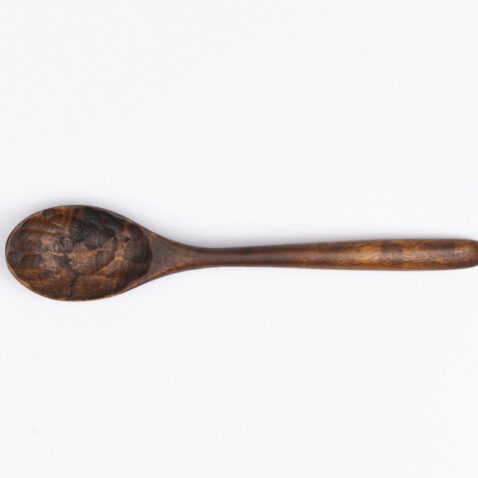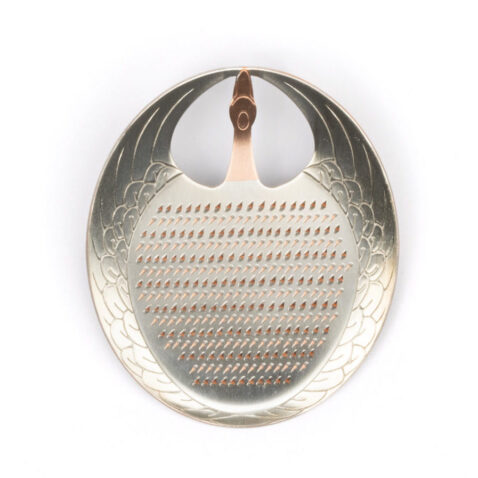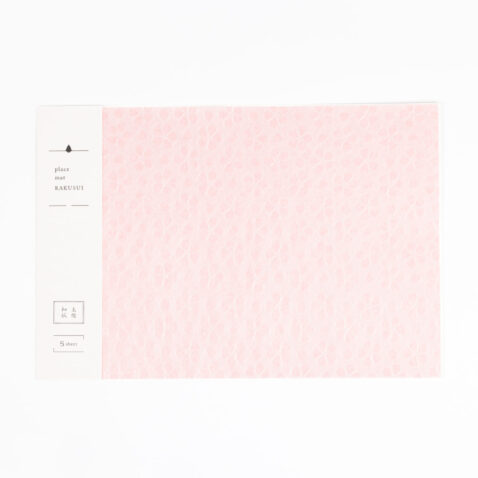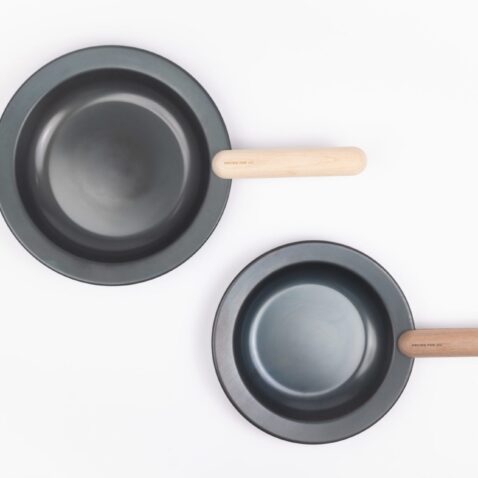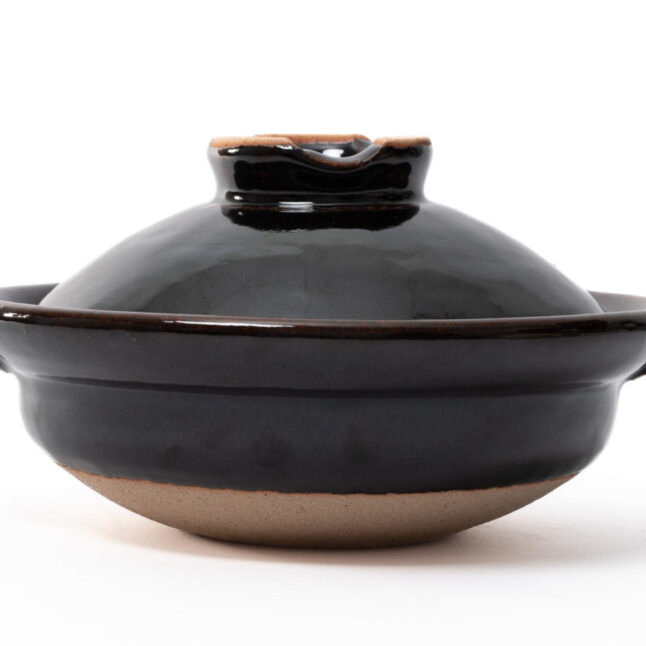
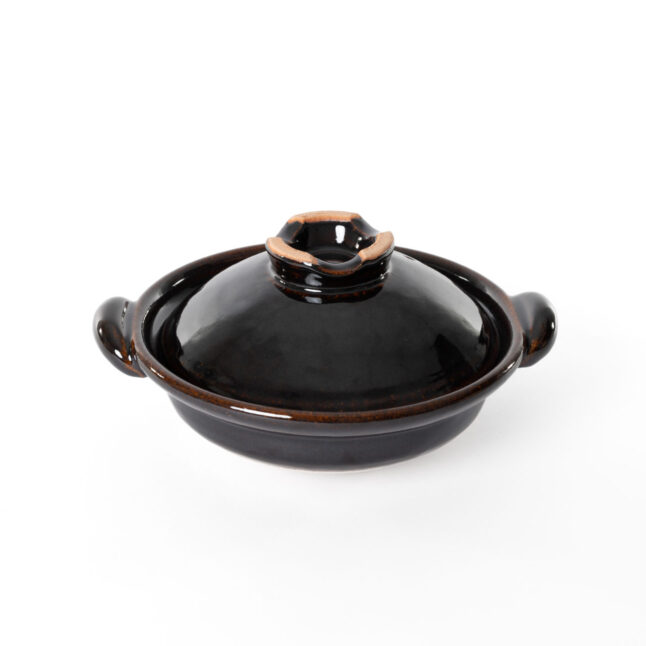
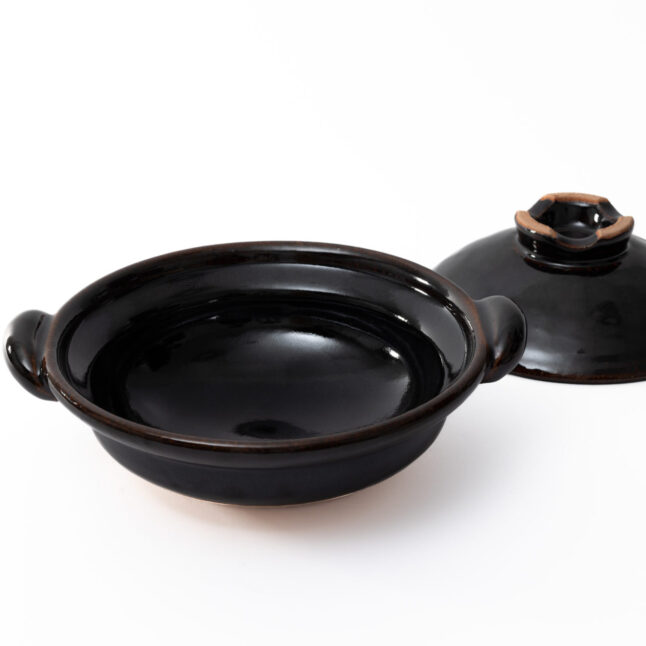
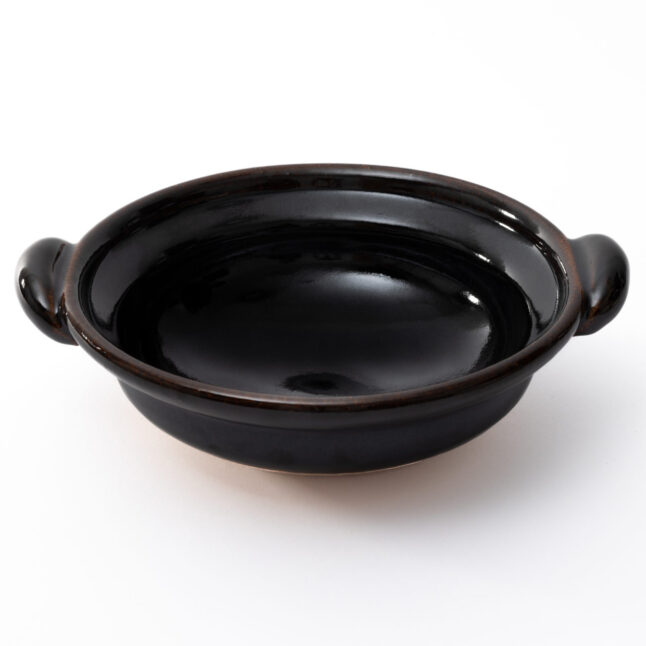
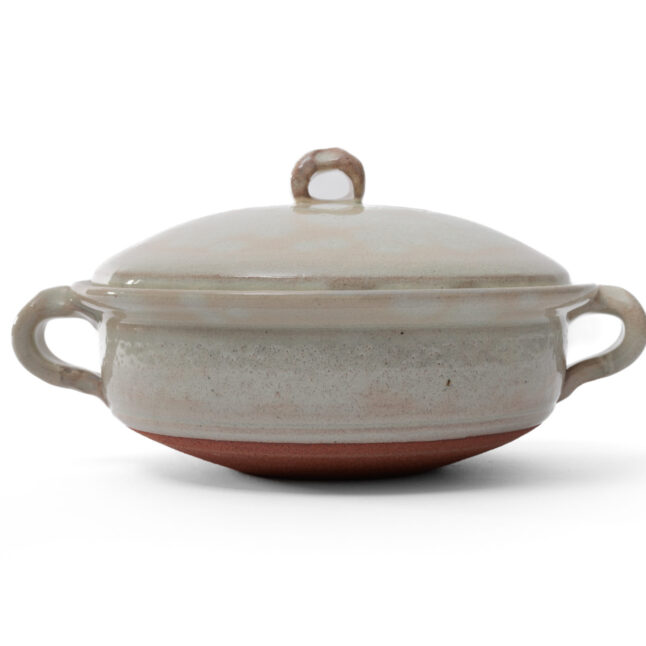


Earthenware Pot - Donabe
黒土楽
A classic donabe, earthenware pot with a black glaze, handmade using longstanding pottery techniques in Iga, Mie Prefecture.
Donabe, meaning earthenware pot, have been used for centuries for everyday cooking in Japanese households and restaurants. They are particularly suited to cooking rice, soups, stews, hot pots and other dishes that require slow cooking. Donabes‘ clay construction retains and distributes heat, enhancing flavour as food cooks evenly, and keeping food warm once ready.
Every donabe is handmade using clay from the Iga valley, formed beneath the prehistoric expanse of Lake Biwa. The clay is mixed with stone powder for even greater strength, then kneaded using a technique called either kikuneri, chrysanthemum kneading, or kikumori, chrysanthemum wedging, to release air pockets and achieve even consistency. These names derive from spiral lines of clay which resemble a chrysanthemum flower. The clay is then placed on a potter’s wheel for shaping, then air-dried, glazed and fired at high temperatures to create the final product.
As each piece is handmade there may be individual difference in the glaze and shape.
Through use, thin cracks might appear on the surface of the glaze and the colour might change on the bottom of the pot. These are signs of the pot developing its character and should not be a cause for concern.
The pot has to be seasoned properly before first use in order to prevent it from cracking and prolong its lifetime.
After use, wash with mild dish soap and lukewarm water. To dry, place the bottom part upside down, and let it dry completely before storing it away to prevent the mold and mildew from growing on it.
Make sure that the bottom is dry before you set the donabe on the heat. Any moisture on the outer bottom surface could cause possible cracking when heated. If you find a crack on the donabe that goes to the edge or has any visible damage, stop using it immediately.
Size: H13 cm x Ø22.5 cm
Volume: 700 ml
Kansai
The Kansai region includes the second-most populated metropolitan area in Japan with its largest city Osaka. Kyoto and Nara, two of Japan’s former capital cities, are home to important temples and shrines and strongholds of intangible cultural heritage, such as the Kyoto textile weaving skills of Nishijin.

Discover more
Sign up for exclusive updates
Receive a 10% discount on your first online order and be the first to hear about Japan House London's Shop collections, exhibitions, events, offers and more, direct to your inbox
Thank you. You have subscribed to the newsletter.
We respect your privacy and data security. Check our Privacy Policy for more details.
